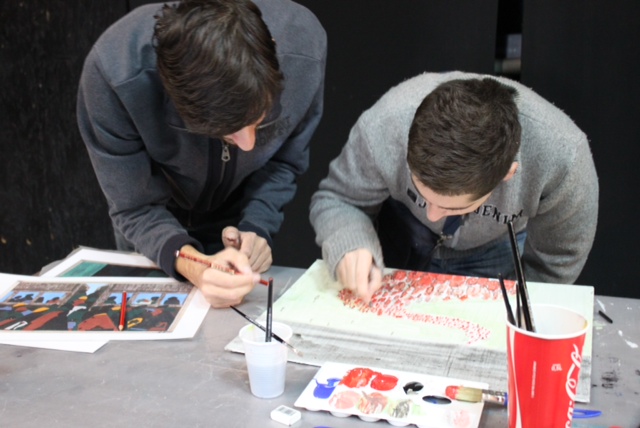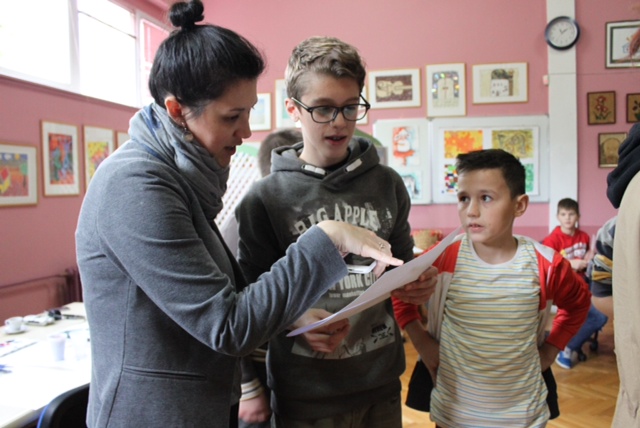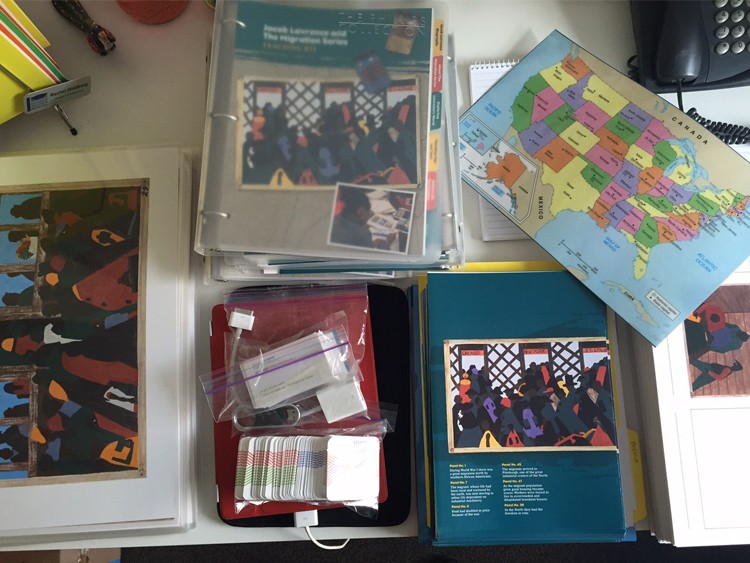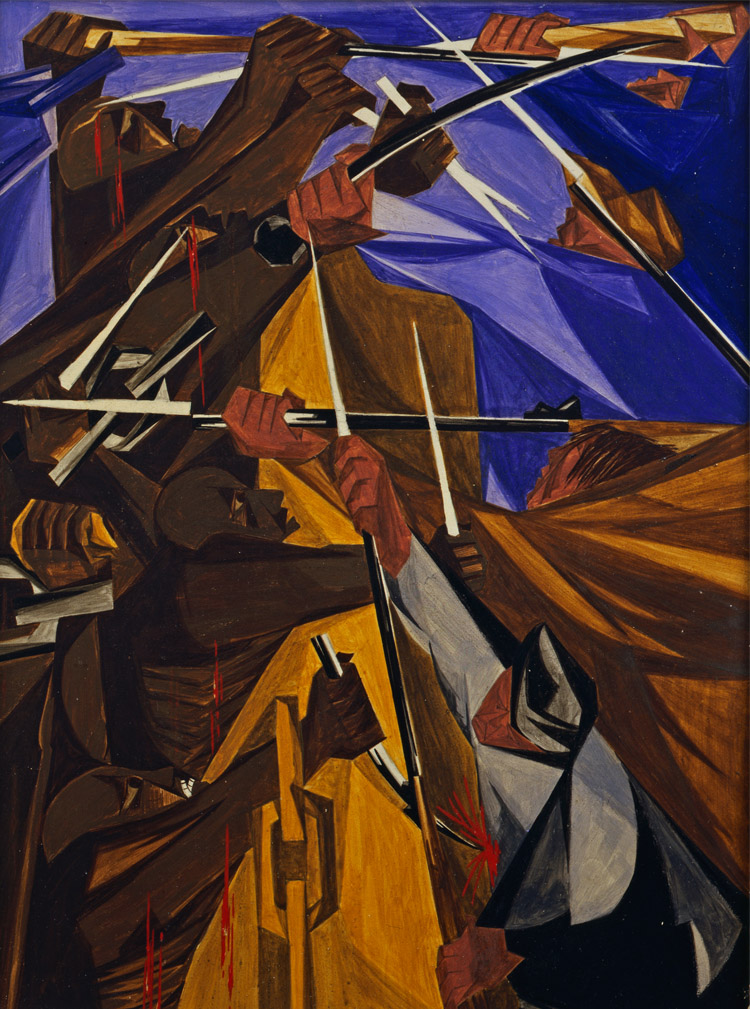Phillips Educators Rachel Goldberg and Andrea Kim Neighbors are in Bosnia facilitating workshops on Prism.K12 and Jacob Lawrence with students, emerging artists, and teachers.

Emerging artists in at OKC Abrasevic art center in Mostar work together to tell stories of Bosnian struggle and migration.
Two days into workshops here in Mostar, Bosnia and already we’re seeing and hearing some amazing stories. We’ve explored Jacob Lawrence’s The Migration Series with emerging artists and elementary school students and asked them to use this masterpiece of American narrative painting as an inspiration for telling their own important stories. So far, we’ve seen and heard stories of struggle, war, migration, discrimination, and hope from these talented young artists.
In the next few days, we’ll be working with high school students, orphans, and teachers. We’re looking forward to hearing and seeing the stories they share!
Rachel Goldberg, Head of K-12 Initiatives





